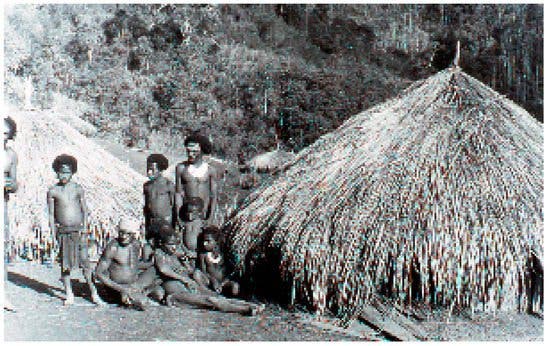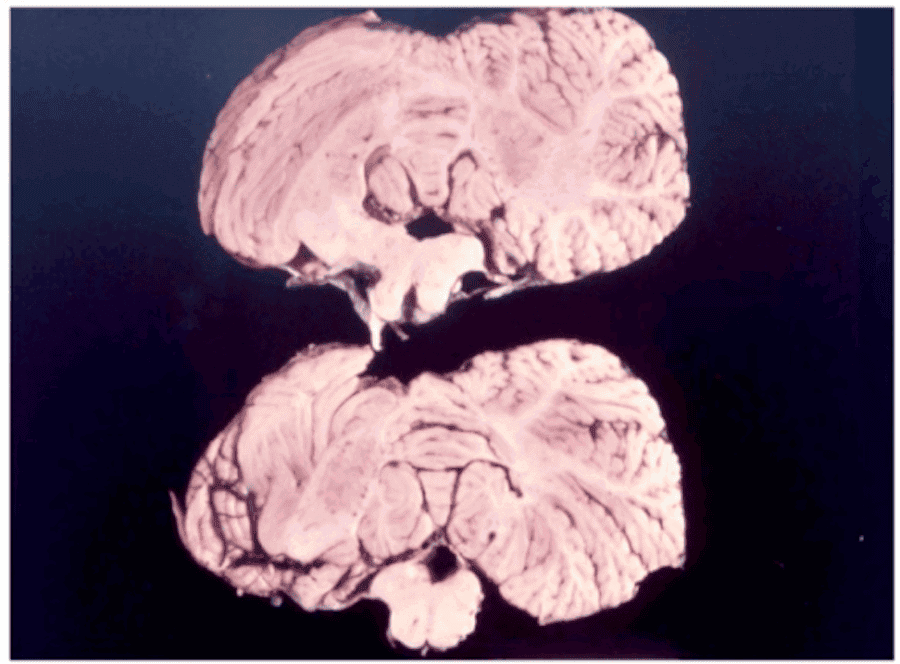It’s no secret that raw, undercooked, and otherwise rotten meat and poultry can make you very sick. The most common foodborne diseases are caused by Campylobacter, Salmonella, Yersinia, E. coli, and Listeria bacteria, though other parasites and viruses may also cause infections.
Foodborne illnesses are no joke and any kind of poorly prepared meat can lead to a potentially life-threatening infection — and that includes human meat too. Enter the bizarre kuru, a very rare neurodegenerative disease caused by an infectious protein, or prion, found in contaminated human brain tissue.
What is Kuru: The cannibal’s disease
The island nation of Papua New Guinea is one of the most fascinating countries in the world. It is a huge biodiversity hotspot, home to thousands of yet undocumented species of plants and animals. Although the nation only numbers around eight million people, there are over 850 distinct languages spoken by the many island communities that have been isolated from one another for centuries by volcanoes, mountains, and the ocean.
On the flip side, it is also one of the most underdeveloped countries. Almost 87% of the population lives in rural areas and the overall literacy rate is only 60%. Many live in remote communities, the most isolated can be found in the highlands. In fact, these highlands are so remote that virtually no one was aware people actually lived there until 1930 when Australian prospectors explored the area enticed by gold. Imagine their surprise when they realized nearly one million people lived there.
As mining activities intensified, so did the flow of westerners. Not just miners and engineers, but also doctors, missionaries, and scientists. When researchers finally made their way to one of those highland villages in the 1950s, one of the most disturbing things they noticed was a strange disease that the locals called kuru, which means “trembling” or “shivering”.

Kuru was found to affect a tribe called the Fore. Of the 11,000 people belonging to this Papuan community, around 200 died each year. One in every ten people in the tribe was affected. At first, western physicians were left scratching their heads as to potential causes. The only thing they knew was that the disease must be affecting the brain, judging from autopsies revealing gaping holes in the brains of diseased individuals that resembled sponges, which is also why diseases in the same class are known as spongiform encephalopathies.
Symptoms include muscle twitching and loss of coordination, involuntary movements, sudden behavioral and mood changes like random, compulsive laughing and crying, slurred speech, difficulty eating, and dementia. There is no known cure to this day and the condition is fatal within one year of the first symptoms showing up.
Kuru progresses in three stages. In the first stage, the patient starts losing some control over their body and experiences difficulty balancing and keeping their posture. The second stage, also known as the sedentary stage, immobilizes the patient, who is no longer able to walk. Body tremors and involuntary jerking, which gives kuru its name, become increasingly common. In the third and final stage, the patient is so weak and unable to control their body that they are bedridden. They can’t speak anymore and usually exhibit dementia and random behavioral changes. The patient usually cannot eat or swallow, leading to severe malnutrition and even starvation, although most patients with kuru die of pneumonia.

Most of the affected patients are either adult women or children younger than 8 years old. As a result, in some villages, there were almost no young women left. The entire Fore community was on the brink of demographic collapse.
From the locals’ perspective, the disease must have been caused by sorcery. After ruling out countless potential factors, including various contaminants and genetics, researchers must have been close to believing it was witchcraft at play too, seeing how, no matter how hard they tried, this puzzle remained unsolvable.
But one anthropologist, Shirley Lindenbaum of the City University of New York, was convinced she was onto something. Lindenbaum noticed a pattern in which people would get sick not long after a funeral was held — and these weren’t your typical funerals.
Cannibal funeral
When a person from Fore village died, their friends and family would often cook and eat them. The Fore believed that it was better for the body of a loved one to be eaten rather than becoming consumed by maggots. It sounds gruesome and sick, but for these people, it was an act of both love and grief.
Women usually died of the strange disease and it was women too who would also remove the brain, mix it with ferns, cook it in tubes of bamboo, and ultimately consume it. Sometimes, these cannibalistic women would pass on pieces of cooked flesh to children. Past a certain age, boys went off to live with men and were no longer allowed to touch food made from human remains.

While Lindenbaum was traveling from village to village, chasing the funeral lead, another group from the U.S. National Institutes of Health led by Dr. D. Carleton Gajdusek took samples of diseased human brain tissue and injected them into a variety of small animals. These efforts were initially fruitless, but the researchers were eventually able to reproduce the disease in chimpanzees around two years after they were exposed to the tissue. The chimps developed symptoms similar to those seen in the Fore people. In a 1966 study, Gajdusek concluded that kuru was transmitted by a “slow, unconventional virus” through the Fore funeral corpse-eating practice.
For his contribution to identifying and describing kuru, Gajdusek was awarded the 1976 Nobel Prize in medicine, but the researcher would later fall into disgrace following his arrest and imprisonment for molesting one of the more than 50 children he had adopted and brought to the United States.
But, as it turns out, kuru isn’t caused by a virus. Neurologist Stanley Prusiner of UC San Francisco discovered that the infectious agent is a rogue form of a protein called a prion (for “proteinaceous infectious particle”). These misfolded proteins induce other healthy proteins to assume a similar malfunctioned shape, disrupting cellular metabolism, and leading to cell death in the brain.
Prions are extremely difficult to destroy — not even in boiling water. They are not recognized by the immune system as foreign, so the body can’t protect itself against their effects like it would against any other infectious agent. As such, prions are basically untreatable and almost always fatal. For his description of prions, Prusiner was awarded the Nobel Prize in medicine in 1997.
Of course, not everyone who engaged in cannibalism actually got sick. A 2009 study compared DNA samples of about 3,000 living Fore people, some of whom had participated in the old rituals, to 152 samples of stored DNA from Fore that kuru killed. The authors found a mutation called G127V that protected people from kuru. This mutation was only found in people who ate human brains and survived.
An obscure disease that revealed Nobel Prize-worthy science
In 1959, the funeral practice of the Fore was banned, but new cases were still consistently reported in those who were exposed before the ban was enforced. Prion diseases have a very long incubation period, sometimes lasting up to 30 years in the case of kuru. The last person with kuru died in 2009 and in 2012 researchers at Curtin University in Australia who had been tracking the disease declared the kuru epidemic was officially over.
Further studies by Gajdusek and others found that a similar agent to the one causing kuru was responsible for scrapie, a disease that affects sheep, and Creutzfeldt-Jacob, a degenerative brain disorder that leads to dementia and, ultimately, death, as well as a variant form of Creutzfeldt-Jacob, more commonly known as ‘mad cow disease.
Although kuru is now extinct, some people are still getting infected with prion disease, most notably mad cow disease after consuming infected beef. Scientists still don’t know the mechanism through which prions do all their damage, but there is now considerable evidence that suggests many neurodegenerative diseases may be tied with self-propagating proteins that accumulate and ultimately kill cells. These include Parkinson’s and dementia.
When researchers first learned about kuru, they were scared but fascinated. But investigations into a practice that Westerners view as barbaric led to the discovery of prions — the kind of research that led to two Nobel Prizes. There are more than 7,000 rare diseases (those that affect fewer than 1 in 2,000 people), so who knows what kind of science is just waiting to be discovered.


